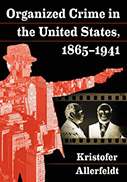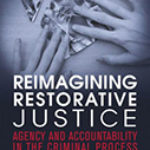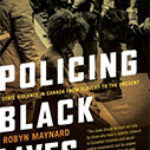Organized Crime In The United States, 1865-1941

Author: Kristofer Allerfeldt
Publisher: Jefferson, NC: McFarland & Company, Inc., 2018. 300p.
Reviewer: Frederick T. Martens
There is something to be said for allowing time and distance to be the arbiters of history. Captured by the historical paradigms of the time, it often takes a fresh pair of eyes decades later to decipher that which is often lost through cultural myopia. The ability to “see the forest from the trees” is what makes Kristofer Allerfeldt’s unprecedented and welcomed contribution to the study of organized crime a work of historical significance. .
For those criminologists who choose to make a career researching or investigating organized crime, Allerfeldt’s treatment of organized crime from the latter part of the 19th and early part of the 20th centuries should be obligatory reading. An iconoclast who seems to enjoy challenging conventional explanations of historical events, Allerfeldt has shed new light on what some criminologists would argue was a resilient myth: the omnipotence of Cosa Nostra and the Mafia nationally.
Following in the footsteps of the American sociologist Gordon Hawkins (1969) and others, Allerfeldt makes a passionate case in support of his overall-thesis: “the Mafia legend is without a doubt the most enduring of all organized criminal myths of the twentieth century…” (p.49).
Arguably, no book review can do justice to the detail and historical precision that Allerfeldt has brought to the topic. Reconstructing history over a 76-year period, beginning more than 150 years ago, is a herculean task demanding diligent and precise documentation that has rarely been accomplished before. The robust bibliography and footnotes alone comprise 23 pages. Understandably, a research project of this magnitude can have any number of inconsequential errors, and then some that are in fact quite consequential. Referring to one of the most maligned pioneers of organized crime research in the United States as David Cressey as opposed to Donald, can best be described as res ipsa loquitur—no harm no foul (p.189). Claiming that Dwight Smith is an organized crime historian is perhaps a bit more egregious, but certainly nothing to fret over (p. 190). Misspelling the name of Scalise and Scalese on the same page raises issues of editorial malfeasance (p.154).
But pitting mobster Alphonse Capone’s personal recollections of the Atlantic City “conclave” in 1929 against the descriptions of scholars such as Dwight Smith, Michael Woodiwiss, and David Critchley, who have no independent knowledge of this conclave, and certainly no more than any noted historians who have likewise described it, leads one to question whether Allerfeldt is cherry-picking those who agree with his ideological proclivities in order to dispel the “Mafia orthodoxy”?
Notwithstanding these irritating distractions, it is Allerfeldt’s goal to reconstruct our historical [mis]understanding of organized crime. He is dedicated to revisiting the events of the past — dissecting and parsing the evidence that other researchers have used to arrive at their conclusions. The author has advanced the belief that the Mafia and Cosa Nostra were the consequence of anti-immigrant paranoia, ethnic prejudice, xenophobia, and scape-goatism; this in order to detract from a larger issue — namely a flawed system of democracy that relied upon the infusion of large amounts of capital in order to maintain “the oligarchy of the political machine” (p.57).
It is without question that political systems spawn variations of organized crime which reflect the unequal distribution of resources in any society. Allerfeldt contends that “…some commentators saw the post Civil War-explosion of industrial capitalism itself as organized crime. These critics pointed to its being based on the condoning of worker exploitation and a total neglect of the human dignity of their employees….They saw the truly threatening criminal organizations as the big business conglomerations…[they] paired big businesses with banks which they saw as extracting usurious sums from the less well off while discounting the repayments made by the trusts and the plutocrats” (p.22).
According to Allerfeldt, America’s “inexhaustible sources of expendable labor: immigrants” created a “fertile ground for organized criminal activity” (p.22). Labor unions often were associated with criminalization (p.23). This in many respects created the aura of “absolute loyalty and total obedience” as well as a “peculiar ability to remain simultaneously threatening and omnipresent, whilst being largely intangible and invisible—even as this study aims to show, mythical” (p.23).
The richness of the author’s analysis lies in his exceptional ability to illuminate the unsavory yet perfectly acceptable relationships between and among gangsters, politicians, and the police. Allerfeldt demonstrates convincingly that organized crime does not operate “outside the control of the American people and their governments,” but is rather an integral part of our political economy.
As early as 1875, the “Whiskey Ring scandal clearly demonstrate[d] a selection of facets that underlie the symbiotic nature of organized crime and the gaining and maintaining of political power that are so vital, and such a defining feature of successful organized crime” (p.53). The insatiable need for campaign contributions then as now, was a feature that politicians took advantage of, treating “vice as a business enterprise and [consequently] extracted funds for election campaigns from underworld figures in return for allowing vice interests to provide these services to their customers” (p.104). This schizophrenic view in many respects characterizes society’s fascination with organized crime. Seen as exploitive by some and the consequence of an unequal and discriminatory economic system by others, organized crime would often provide a viable avenue of “social mobility, respectability and acceptability” (Bell, 1962).
Describing how for political titans of that time, success depended upon their control of the instruments of coercion, primarily the police, Allerfeldt is at his best — weaving together intricate, shocking, and lurid descriptions of how the police were used to, in effect, organize crime. Demonstrating that in many cities throughout the United State where crime was organized, the police were “notoriously corrupt,” Allerfeldt provides a litany of examples of “graft, corruption, and kickbacks” to political bosses in order to “control the police and criminal courts in their wards” (p. 57, p. 86).
And it was not only in New York, New Orleans, Kansas City, Boston, Milwaukee, Cleveland, and Chicago, but likewise in Los Angeles, Omaha, and even Deadwood, South Dakota that the intersection of crime and politics could be found. As Allerfeldt concludes: “political expediencies, sectional influences, and the overwhelming effects of the ‘favor bank’ frequently supplanted the legal niceties and ethical considerations that had previously been held to govern society. Manufacturing alliances and building a power base became central concerns of these [political] bosses” (p.57). Often, this was accomplished by teeming up with vice operators, many of whom were flush with cash—the grease that lubricated the gears of government. The author explains how organized crime, namely the Mafia, interfaced with the political imperatives of cities throughout the United States.
Drawing upon the murder of New Orleans Police Chief David Hennesey on October 14, 1890, Allerfeldt sets the stage for his central theme: “without a doubt [it was that] date the American Mafia was born, or at least it was the birthday of its mythological status…Thanks to the press coverage of the [Hennesey] murder, trial and lynching, the average American now had the words ‘Mafia” firmly placed in the lexicon” (pp.48-49). Allerfeldt argues that the murder of Hennesey, while laid at the feet of “unintelligible, savage looking peasants [referring to the Sicilians charged with the murder],” was merely another example of “immigrant bashing” (p.32). Ironically, there seems to be, at least in Allerfeldt’s research, as much evidence to suggest that Hennesey was murdered because of the fractious relationship he had with a detective, Dominick O’Malley, who had been passed over as chief by Hennesey, as there was to convict and execute eleven “Sicilians” for the crime (p.44).
It is his iconoclastic approach that obligates the reader to expend considerable energy, deliberative patience, and intellectual capital in order to sift through, capture and ultimately digest Allerfeldt’s interpretations of history. Simple, conventional explanations can not appropriately or accurately untangle the Machiavellian plots and political machinations that governed during this historical period—1865-1941—at least according to Allerfeldt. His command of American history so far as it involves the underbelly of society is quite exhaustive. Whether he is explaining the “Capone Era,” “Chicago’s Dry Cleaning Racket,” the “Castellammarese War,” “The Sicilian Vespers,” or “Organized Crime Fighters,” there certainly is a sense that he has sought to expose the “devil” by relentlessly pursuing “the detail.”
Although Allerfeldt’s audience seems to be primarily criminologists, the story that he weaves is equally-suited for aspiring political scientists and economists who often ignore or are ambivalent about recognizing the critical role played by the underground’s political economy. The linkage “between vice and party politics was [and is] central. The money from one financed the other” (p. 62).
What Allerfeldt uncovers from the late 1800’s and early 1900’s remains relevant today. Most organized crime is local (See, e.g., Chambliss, 1988; Potter, 1994; Bumsted, 2013; Mele, 2017). Mafia or Cosa Nostra for the most part are atypical forms of organized crime here in the United States; but with one caveat to keep in mind — atypical does not mean irrelevant.
As Allerfeldt points out, organized crime and perceptions thereof are not static, but are “fluid and changeable” (p. 18). Organized crime can and does mature over long periods of time, making it perhaps indistinguishable from its earlier antecedents. By the time he ends his research in 1943, Cosa Nostra was emerging as a credible threat to the body politic of many urban centers, particularly in the Northeast, parts of the mid-west, and into southern and western parts of the United States.
There is little doubt that by the 1950’s and 1960’s, Cosa Nostra played a pivotal role in the organization of crime in certain sectors of the country (See, e.g., Lilley, 1967; Porambo, 1971; Cressey,1969; Salerno, 1969; Reuter, 1982; Haller, 1991; Jacobs, 1999). It had taken control of some labor unions that had the ability to shut down the country’s transportation infrastructure; infiltrated several hospitality and service industries; and maintained alliances with critical construction trade unions (See, e.g., Brill, 1978; Knoedelseder, 1993; Jacobs, 2007). But most importantly, Cosa Nostra had insinuated itself into the highest levels of the federal government, principally the Central Intelligence Agency, providing resources in an effort to topple “leftist” regimes in South and Central America (Kessler, 1999).
Through the C.I.A.’s relationship with the boss of the Chicago “Outfit,” Sam Giancana, with whom the President of the United States was sharing a mistress, Cosa Nostra was contracted to destabilize the government of Cuba (Hersh, 1997). The assassination of President John F. Kennedy continues to haunt the annals of conspiracy theorists, and there are some who argue that the Cosa Nostra’s fingerprints are all over the “plot to kill the President” (Blakey, 1981). No other criminal enterprise or form of organized crime can lay claim to these series of events. The Cosa Nostra can and has.
As Allerfeldt so properly acknowledges: “History is obviously never a complete picture of the past. It can’t be. It is always a question of selection: it is a focus, an emphasis and a judgment” (p. 260). Perhaps the author’s next challenge will be addressing organized crime in the latter part of the twentieth century? Wiretaps, “bugs”, and proofs beyond a reasonable doubt, as occurred in courtrooms throughout the United States, can often serve as an addendum to history. Coupled with the research by renowned historians like Allerfeldt, our understanding of organized crime will be much richer, more accurate, and perhaps less contentious.
__________________________________________________________
Bell, Daniel. 1962. “Crime as an American Way of Life: A Queer Ladder of Social Mobility.” In The End of an Ideology: On the Exhaustion of Political Ideas in the Fifties. New York: The Free Press.
Blakey, G. Robert. 1981. A Plot to Kill the President: Organized Crime Assassinated JFK—The Definitive Story. New York: Times Books.
Brill, Steven. 1978. The Teamsters. New York: Simon and Schuster.
Bumsted, Brad. 2013. Keystone Corruption: A Pennsylvania’s Insider View of a State Gone Wrong. Philadelphia: Camino Press.
Chambliss, William. 1988. From Petty Crooks to Presidents. Bloomington, Indiana: Indiana University Press.
Cressey, Donald R. 1969. Theft of a Nation. New York: Harper and Row.
Haller, Mark H. 1991. Life Under Bruno: The Economics of an Organized Crime Family. Harrisburg, Pennsylvania: Pennsylvania Crime Commission.
Hawkins, Gordon. 1969 (Winter). “God and the Mafia.” The Public Interest.
Hersh, Seymour M. 1997. The Dark Side of Camelot. New York: Little Brown and Company.
Jacobs, James and Laureen P. Gouldin. 1999. “Cosa Nostra: The Final Chapter.” Crime and Justice. Vol. 25.
Jacobs, James. 2007. Mobsters, Unions and the Feds. New York: NYU Press.
Kessler, Ronald. 1992. Inside the CIA: Revealing the Secrets of the World’s Most Powerful Spy Agency. Iron Mountain, Michigan: Greenway Books.
Knoedelseder, William. 1993. Stiffed: A True Story of MCA, The Music Business and the Mafia. New York: HarperCollins.
Lilley Commission. 1967. The Governor’s Select Commission for the Study of Civil Disorder in New Jersey. Trenton, N.J.: State Library.
Mele, Christopher. 2017. Race and the Politics of Deception: The Making of an American City. New York: NYU Press.
Porambo, Ronald. 1971. The Explosive Story of the Newark Riots. Hoboken, N.J.: Melville House.
Potter, Gary W. 1994. Criminal Organizations: Vice, Racketeering and Politics in an American City. Prospect Heights, Illinois. Waveland Press.
Reuter, Peter. 1982. The Value of a Bad Reputation: Cartels, Criminals, and Barriers to Entry. Washington, D.C.: The Rand Corporation.
Salerno, Ralph and John C. Thompkins. 1969. The Crime Confederation.
New York: Doubleday and Company.
Frederick T. Martens is a retired New Jersey State Police Detective/Lieutenant. He has conducted investigations of organized crime and public corruption in New Jersey, New York, and Pennsylvania (where he was Executive Director of the Pennsylvania Crime Commission). A former president of the International Association for the Study of Organized Crime, Martens has studied and written extensively about organized crime


